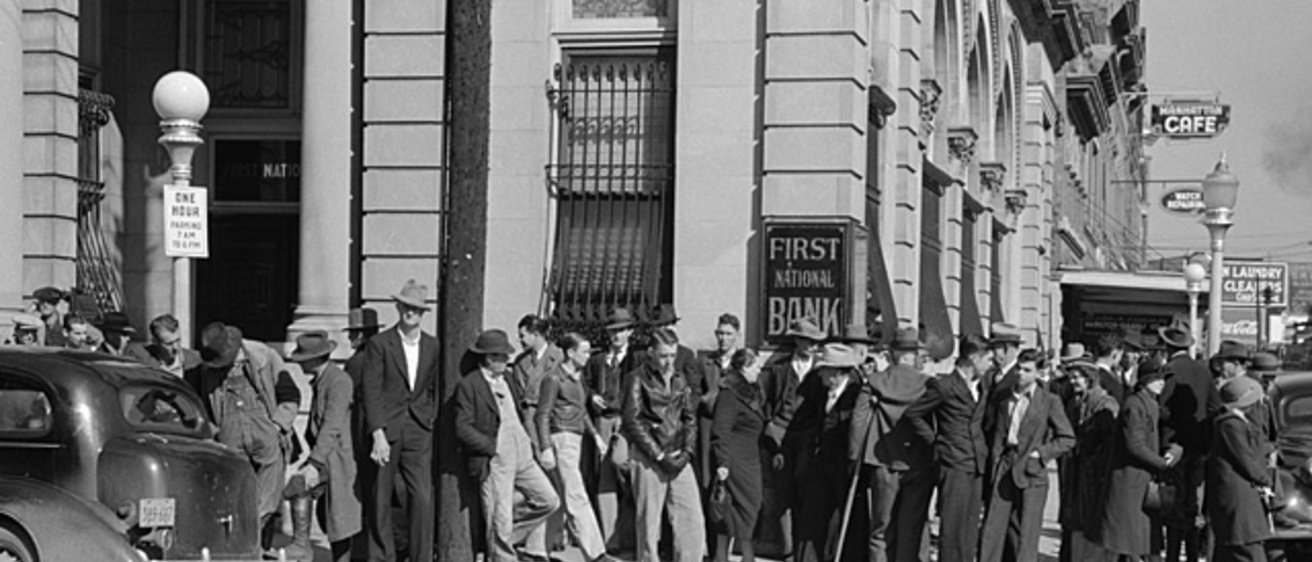A University of Iowa economist’s new study of Depression-era bank failures in Mississippi suggests that the overall economic damage caused by financial crises can be mitigated by cash infusions from the Federal Reserve.

Nicolas Ziebarth, assistant professor of economics in the Tippie College of Business, says the study also raises questions about the traditional thinking that economies need a long time to recover after suffering a serious financial shock.
“The results offer tentative evidence that recovery in the formal banking sector was not necessary for a recovery in the overall economy during the Depression,” says Ziebarth. If applied to the current economy, he says it might imply that the sluggish recovery could be the result of something more than a weakened financial sector that has been slow to recover from its 2008 near-collapse.
Ziebarth says Mississippi is an interesting laboratory to study the economic impacts of bank failures and government fiscal policy because the state is divided between two Federal Reserve districts. Southern Mississippi was in the Atlanta Fed district, which took an aggressive policy after a 1930 banking crisis to aggressively stem bank runs by extending loans that propped up struggling banks. The northern part of the state was in the St. Louis Fed district, which took a far more conservative approach in lending cash to banks.
The Mississippi bank panic in 1930 saw statewide deposits fall by 55 percent in less than two months, and did not recover until 1934. But more banks remained open in the Atlanta Fed district than in the St. Louis district because of Atlanta’s more aggressive lending policies. Within two months of the crisis, 35 percent of the banks in the St. Louis district of Mississippi had gone out of business, compared to only 20 percent of the banks in the Atlanta district.
The St. Louis Fed finally did adopt a more aggressive policy similar to Atlanta’s in 1931. “However, the damage relative to the northern part of the state was already done,” Ziebart says. “In particular, the gap between the percentage of banks in business across the two regions never closed.
“What is striking is the fact that this decline could have been averted by extending discount loans that ended up being more or less free,” he says.
Despite the ongoing funk in Mississippi’s financial sector following the banking crises, he says the state’s manufacturing sector seemed to recover much more quickly. Using data from the U.S. Census Bureau, he found that in 1931, plants in the St. Louis district earned 21 percent less revenue than plants in the Atlanta district, and saw a 31 percent decrease in production. Overall employment was significantly lower in the St. Louis district, and the number of hours per worker was 12 percent less, because more firms were going out of business and fewer firms were replacing them than in the Atlanta district.
But Ziebarth says the manufacturing numbers had stabilized by 1933 and remained at roughly equal levels, even after a second banking crisis occurred that year. He says that stability shows Mississippi’s manufacturing economy had absorbed the banking crisis of 1930, regardless of which Federal Reserve district they were in.
“Manufacturers found ways to keep going,” Ziebarth says. “Firms were able to find alternative access to capital or access wholesale credit, or the surviving banks were stronger and able to fill in the gaps left by the closed banks.”
However the manufacturers were able to stay in business, Ziebarth said the Fed’s lending policies had an important short-term effect on the state’s economy, but little impact on the long-term economic recovery.
“Once the shock has happened, Fed policy is important in smoothing out the initial shock,” he says. “But once the shock has happened, people were able to work out alternative arrangements.”
One important difference in the current crisis from the Depression, he says, is that consumer spending was a much smaller part of the overall economy during the 1930s. Today, consumer debt is as much a drag on the recovery as the financial sector’s struggles because consumer spending makes up about 70 percent of U.S. GDP.
Ziebarth’s study, “Identifying the effects of bank failures from a natural experiment in Mississippi during the Great Depression,” will be published in a forthcoming issue of American Economic Journals: Macroeconomics.
